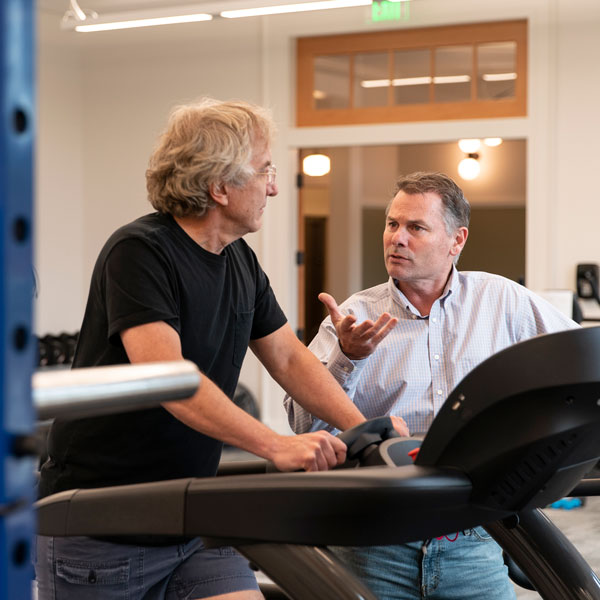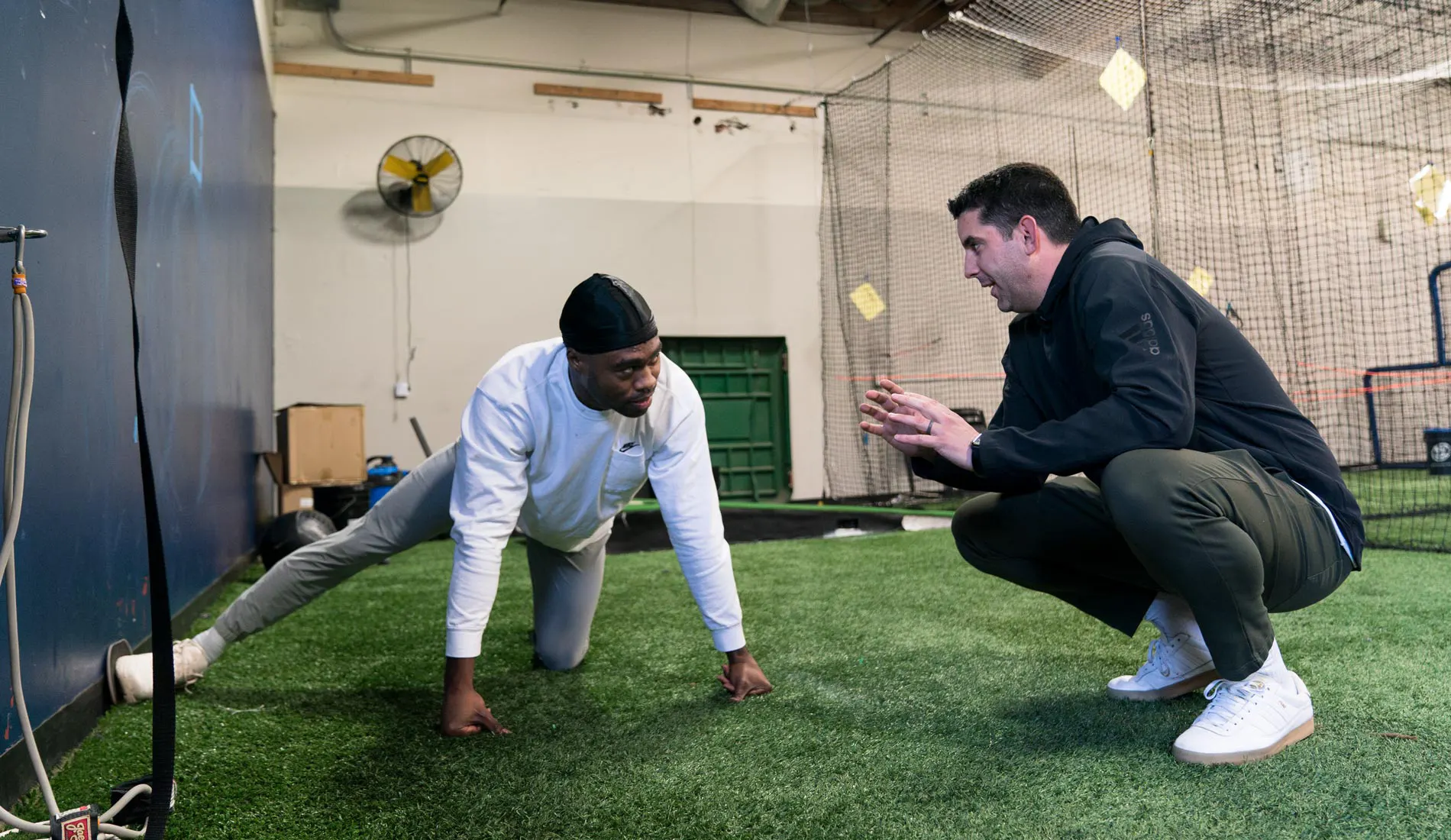by Jeremy Hilliard
President, Oregon Chapter of the American Physical Therapy Association
Physical therapy is a highly rewarding career, and there’s proof to back it up: In 2023, U.S. News & World Report rated physical therapist as the #6 best job in the U.S. and the #3 best healthcare job.
The demand for physical therapists is also high. But becoming a physical therapist requires more than just wanting a “great job.” It takes hard work, education, and proving that you deserve the great privilege and responsibility of caring for patients.
Physical therapists (PTs) are healthcare professionals and movement experts who help people of all ages live their best lives. They focus on restoring function and optimizing movement in individuals with injuries, disabilities, and other health conditions, as well as assisting those who want to prevent injury or simply live healthier lives.
Simply put, physical therapists help people move and function better so they can live life to the fullest.
Related Article: PT vs. PTA vs. Aide
The path to becoming a physical therapist is challenging and requires careful consideration. While the steps to become a licensed physical therapist may vary for each individual, there are some general requirements that every person must fulfill. These include:
- Graduating from a CAPTE-accredited doctor of physical therapy program
- Passing the National Physical Therapy Examination (NPTE)
- Completing any state-specific licensure requirements
1. Entry-Level Education: Doctor of Physical Therapy
To become a licensed physical therapist in the U.S., you need to earn a doctor of physical therapy (DPT) degree from a program accredited by the Commission on Accreditation in Physical Therapy Education (CAPTE). Being accredited ensures that a DPT program teaches you certain minimum topics, but each program may have special areas of emphasis and/or faculty interest. DPT programs are usually three years long, though some are shorter.
You’ll study a variety of subjects in a DPT program, including:
- Anatomy
- Physiology and exercise physiology
- Biomechanics
- Kinesiology
- Neuroscience
- The musculoskeletal system
- Histology
- Pharmacology
- Pathology
- Pediatrics
- Geriatrics
- Ethics, values, and professionalisms
- Cardiovascular and pulmonary systems
Most DPT programs require that applicants have completed a bachelor’s degree, but few (if any) require a specific major. However, there are some prerequisite courses you must complete to make sure you have the foundational knowledge needed to succeed in a DPT program, either during or after finishing your undergraduate coursework. These prerequisites vary slightly from school to school, but usually include classes in:
- Anatomy and physiology
- Biology
- Chemistry
- Physics
- Social and behavioral sciences
- Statistics
You can find a program-by-program comparison of these requirements on the Physical Therapist Centralized Application Service (PTCAS) website.
Related Article: How to Get into Physical Therapy School
How long does it take to become a physical therapist?
The length of time to become a PT depends on a few things. If you follow the traditional pathway and complete your bachelor's degree in four years, including all prerequisites, and then complete a three-year DPT program, it will take you about seven years in total.
If you still need to finish some prerequisites after your undergraduate degree, it will take longer. On the other hand, if you can finish your degrees more quickly, it will take less time. There are several factors to consider, but seven years is a general starting point.
2. National Physical Therapy Examination (NPTE)
After completing a DPT program, your next step is to pass the NPTE. This exam is developed and maintained by the Federation of State Boards of Physical Therapy (FSBPT), which is responsible for protecting the public by promoting safe and competent physical therapy practice.
The NPTE is offered four times each year, in January, April, July and October. It’s a computer-based test with 250 questions divided into five sections, and it takes five hours to complete. Scores range from 200 to 800, and you need to get at least 600 to pass. The exam is graded on a pass/fail basis.
If you don’t pass the NPTE on the first attempt, you can retake the exam up to six times. In Oregon, the exam can be taken a maximum of three times within any one-year period. If you need to repeat the exam, the FSBPT provides resources to help you improve your score.
3. State-Specific Requirements
The final step to obtain initial PT licensure is to meet any requirements specific to the state where you want to work. Being a PT is a privilege, not a right, and licensure shows that a state is granting an individual that privilege.
Each state determines its own requirements; the FSBPT maintains a web page with links to each state’s practice act. All require a fee and that their state’s practice act (i.e., rules) is followed. Many also require passing a test to prove that you understand or are at least familiar with the state’s rules.
George Fox University’s doctor of physical therapy program is located in Oregon, and many of our students choose to practice in Oregon after graduation. As such, we refer students to the Oregon Board of Physical Therapy (OBPT) for specific steps to be taken to obtain licensure in the state. Oregon also requires all licensees to take and pass the Oregon Jurisprudence Exam (OR-JAM).
In recent years, the Physical Therapy Compact was established to improve the public’s access to physical therapy services by increasing the ability for PTs to work in multiple states. Physical therapists can practice in multiple states under compact privileges, which helps ease the burden and cost of obtaining licenses in each state. However, they still need to follow the rules in each state's practice act.

Maintaining Licensure and Lifelong Learning
To this point, we’ve gone through the steps to achieve initial licensure. But after you become a physical therapist, you’ll need to continue to learn and stay competent throughout your career. Each state has different requirements for continuing education, which can be completed through various means. It’s generally best to confirm with each individual state, or you may consult this list of physical therapy continuing education requirements by state.
In Oregon, a total of 24 hours of continuing competence must be completed every two-year licensure recertification period, which ends on March 31 each even-numbered year. Generally speaking, continuing competence consists of additional coursework to develop and improve clinical skills, but it also includes activities like presenting a course or lecture, serving as a certified clinical instructor for student physical therapists, completing a specialty certification, or other activities described by the Oregon Administrative Rules.
Professional Membership
Beyond licensure as a physical therapist, you have the opportunity to be part of something far greater. Active membership in the state and national associations is not a requirement for licensure, but it allows you to be a part of a community that advocates for the physical therapy profession, the patients it serves, and the health of society.
In addition, being a member of APTA offers member-only benefits and keeps you abreast of national and state advocacy efforts that help our profession (and patients) stay strong.
APTA Oregon exists to support, promote and advocate for the PT profession in Oregon by supporting a community of PTs and PTAs who are recognized for their expertise in improving physical health, movement and function. APTA Oregon is the face of physical therapists in the state and offers:
- Local continuing competence opportunities
- Professional networking events
- Legislative advocacy at the state and national levels, and
- Access to an organization that works on behalf of its members to better serve the profession and patients in Oregon
As a nonprofit organization, APTA Oregon is led by and composed of PTs and PTAs who are passionate about the physical therapy profession and the patients and communities they serve.
Next Steps
Now that you know how to become a physical therapist, the next step is to start your journey. Explore our physical therapy career resources to learn more about the profession and how to get started. Best wishes on pursuing your goal of becoming a physical therapist!
Learn more about George Fox University’s innovative doctor of physical therapy program in Oregon
Jeremy Hilliard, PT, DPT, is an associate professor in the DPT program at George Fox University and current president of the Oregon Chapter of the American Physical Therapy Association.
Questions?

Megan Bingham
Admissions Counselor, Doctor of Physical Therapy
